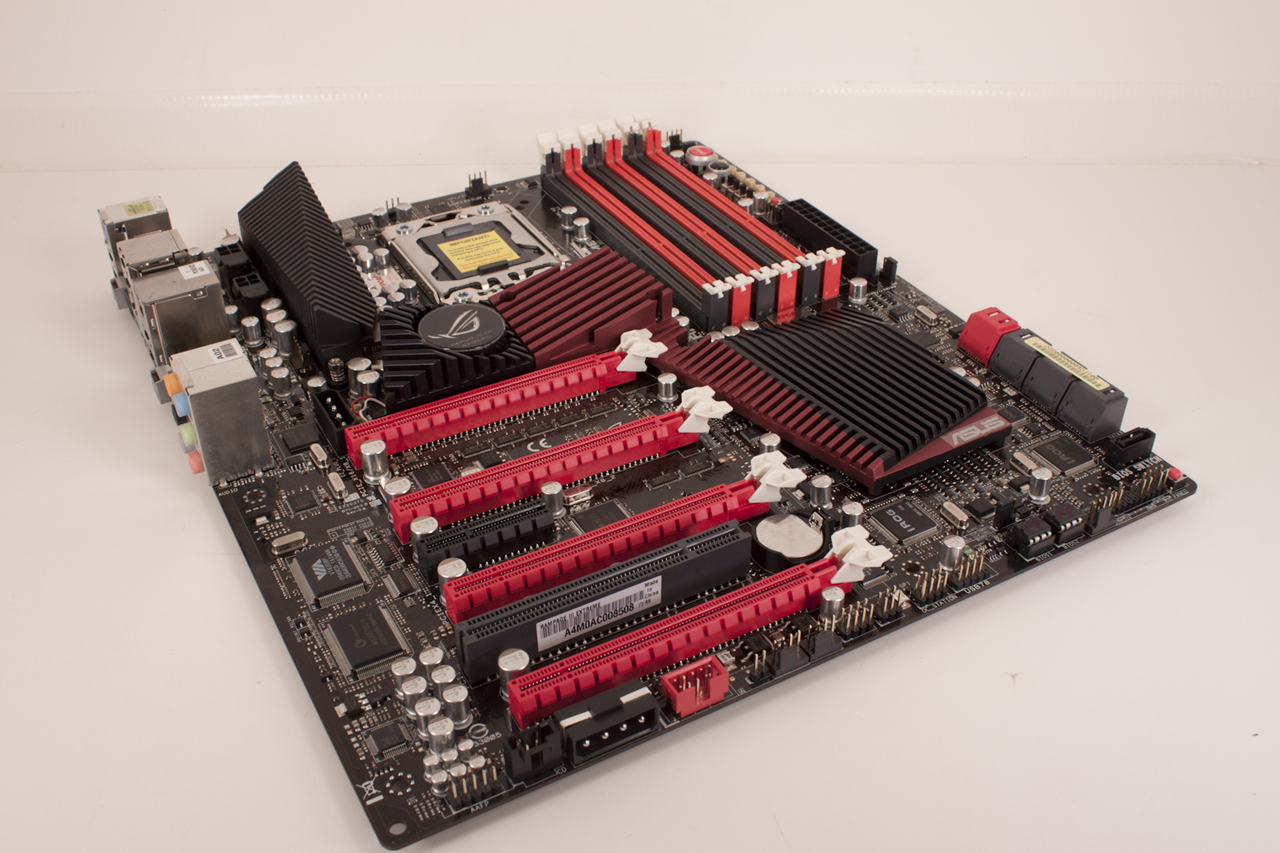Section II - Performance Tests, Synthetic
In this section of testing we cover the synthetics. These are tests that run a scripted sequence of internal APIs or that use another installed application to perform a series of scripted events. They are great in that they can provide reproducible results across various platforms. On the down side, synthetic tests can be fooled with driver tweaks and optimizations. In some cases it is necessary to rename the .exe file to something generic to discover if this is the case. In any event when this is needed (when a test shows a drastic difference in performance over the renamed exe) we will note this and show both results for comparison.
PCMark Vantage -
PCMark Vantage is a suite of tests designed to test the power of your computer. It runs task that range from productivity to gaming (DX9 only). It is a great test to identify potential problem areas with general performance on a system. It can also show how well a single component can increase or decrease system-wide performance. We run both the x86 and x64 PCMark Suites for testing.
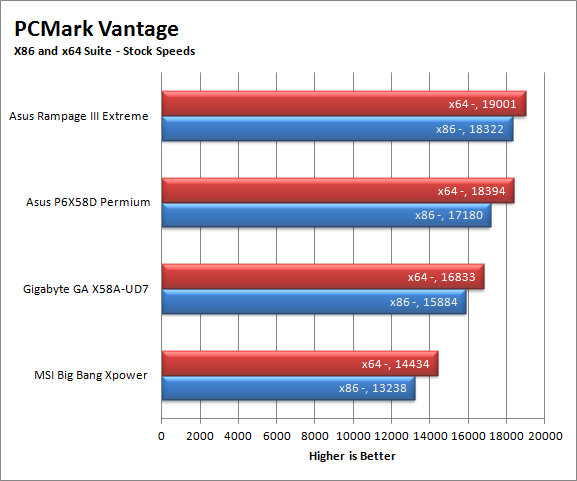 |
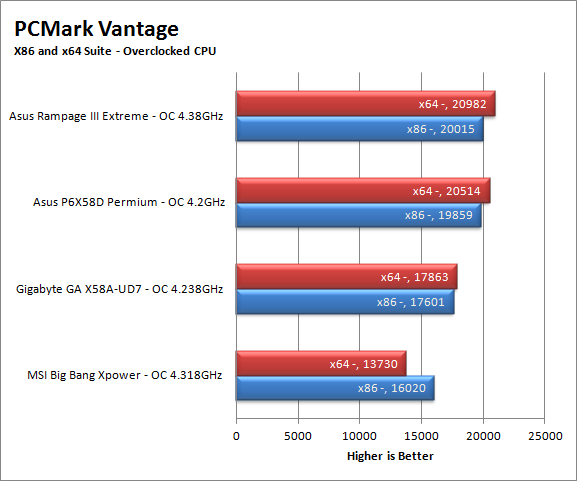 |
Wow, the numbers on this test are impressive. The RIIIE surpasses the other by at least 600 points. Not a bad thing here and a good sign that we may see additional top notch performance from the RIIIE. Of course as the RIIIE is an overclocking board (meant for benchmarking), there is the possibility that real-world tests may slow down.
3DMark Vantage -
3DMark Vantage is the other FutureMark test that we run on our motherboards. This test simulates the typical tasks that a GPU (and system) would have to perform to provide you with a good gaming experience. It is based on the DX9 and DX10 engines but can only be installed on Windows Vista or later. The suite of tests covers DX9 rendering, DX10 rendering, AI computations and PhysX. The problem with the PhysX calculations is that nVidia owns that technology. This gives them an upper hand in the test runs, for this reason we will always run 3DMark Vantage with GPU PhysX enabled and disabled when we use an nVidia GPU in our testing. As we currently use an HD 5870 this will not be an issue for now.
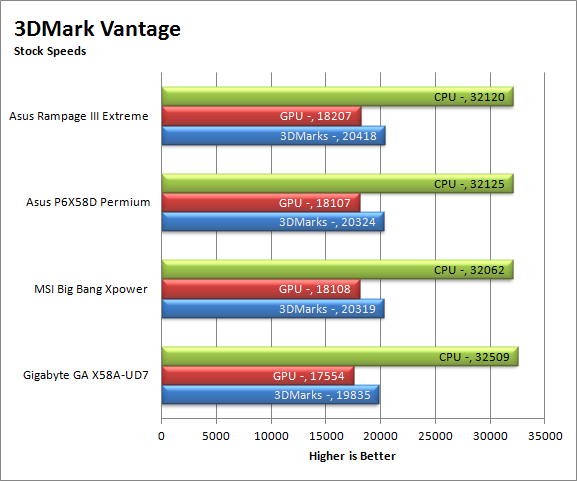 |
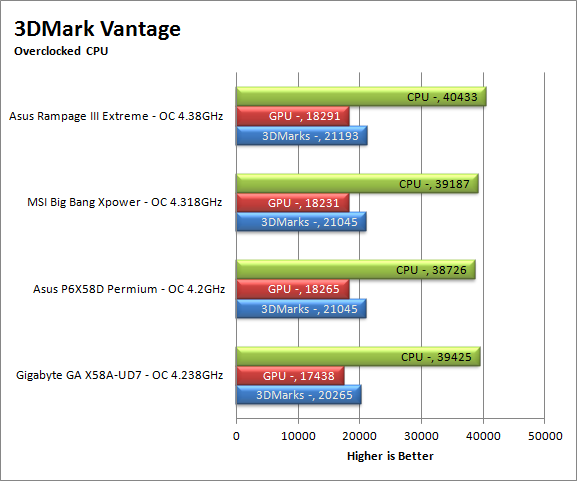 |
Again, although we have a winner (and in benchmarking that is what is important) we have to note that the win is by a handful of points. In the 3DMark world the 100 or so point gap is nothing. However, what we are seeing her is that the RIIIE should not be any hindrance to your gaming, at least not for DX9 and DX10.
HyperPi 0.99b -
HyperPi is a front end application that allows you to easily run multiple instances of the SuperPi application. SuperPi, for those that are not familiar with it, is an application that measures the time it takes to calculate the number Pi out to as many as 32 million places. This calculation is then checked and run multiple times (up to 24 for a 32M run). This test stresses the CPU, Memory and HDD as data is handed off between the three. If there is a weak link, HyperPi will show it. For our testing we run the 32M test on as many cores (and threads) as the CPU has available. The slowest CPU time is then recorded.
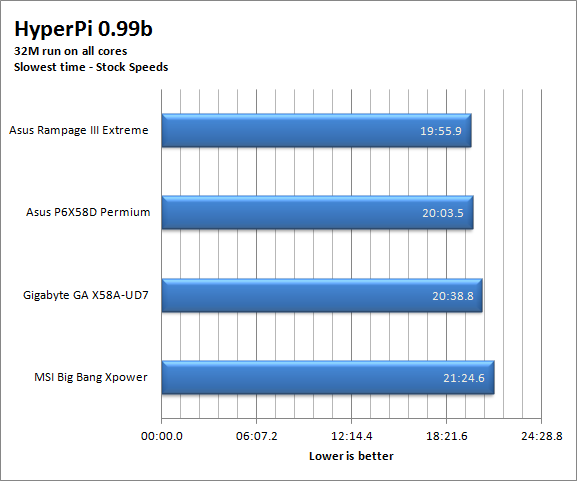 |
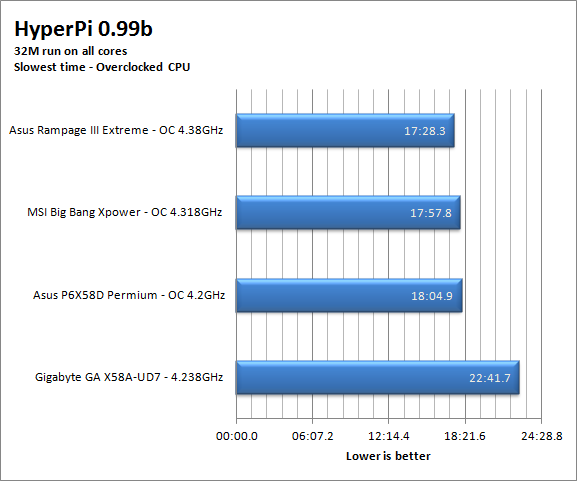 |
The Rampage III Extreme does well here. The margin of victory is small, but it is still there. It confirms what we saw with the memory and HDD performance, with the greater memory performance obviously making up for the slightly slower HDD performance. In the end it balances out as the faster HDD performance of the P6X58D is counter balanced by its slower memory performance.
Cinebench R11.5-
Cinenbench R11.5 is the 11th release of Moxon’s rendering test. This test is based off of the Cinema 4D engine, which is one of the industry standard tools for digital animation. It is a powerful product with many different modules that can be “plugged” into it to increase its effectiveness. With Cinebench you get to see how your computer would do using this application. There are two tests; one tests the CPU’s ability to render an image across multiple cores or threads. The other tests your systems ability to handle OpenGL based rendering.
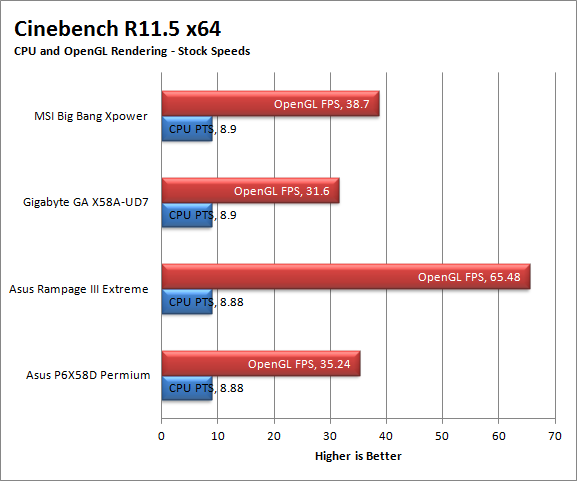 |
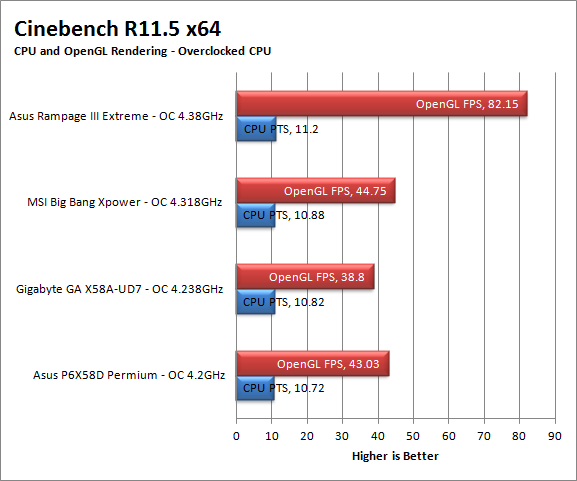 |
The performance here is very close; I would not even call any of these boards a winner here. The .01 point difference could be nothing more than a testing variance (which is usually between 2-3% but can be as much as 5%). As such it is simply not a clear cut win by anyone here. It looks like the major factor here is the Core i7 980X CPU more than anything else that the boards can throw at us. Of course the overclocked scores are widely varied as the CPU and RAM speeds are.
OpenGL is, interestingly enough, all over the place. We are not sure, as of this writing, what the issue is but we are certainly going to try and find out.

